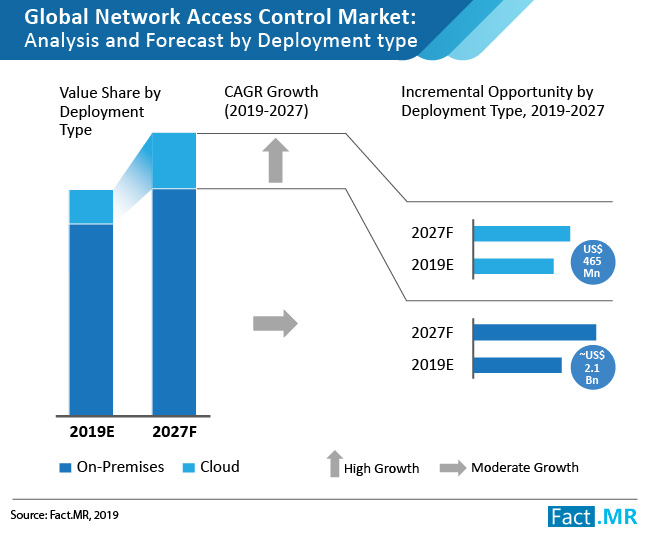A look at the global network access control market
The network access market reached a valuation of ~ $953 million in 2018, according to Fact.MR. The continuous evolution of information security parameters is likely to warrant new opportunities for companies active in the network access control market.

With the parade of technological advances, growth in new security solutions for data protection against malicious attacks is imminent, and is likely to unfold in various fronts. Network access control (NAC) has come a long way and a cohort of leading companies have come up with solutions to further underpin its evolution over these many years.
“One of the key benefits of network access control is its ability to disable malicious actors from plugging into an organization’s network, which is a big reason encouraging enterprises of varying stature to embrace and invest in the concept. Traditional AAA are a complete misfit for today’s networks. Customers rely on network access control solutions, hardware, software, and solutions, to solve multiple problems such as visibility, control, policy enforcement, and protection. In response to the aforementioned, NAC vendors are adding more number of features and capabilities to their offerings so that end user satisfaction is well taken care of”, according to a Fact.MR analyst.
Regional data
North America will continue being the most lucrative market for network access control, with an ever-expanding growth of large and small & middle-sized enterprises. The region remains one of the earliest adopters of end point devices, some of the prominent ones being smart phones, laptops, and tablets, thereby laying the foundation of steadfast adoption of network access control solutions.
The US continues to be at the forefront of demand for NAC, with ever-increasing number of enterprises getting aware of the benefits of network access control with respect to business operations, finds the Fact.MR analysis.
BYOD
With BYOD in place, companies are able to boost the ‘agility factor’ of their operational bases, which, in turn, helps them achieve long-term goals. However, a myriad of security considerations has flared up in line with the widespread adoption of BYOD culture, which has pushed the demand for network access control by a wide margin.
Connected devices
Connected devices increasingly serve as threat vectors for attackers for intruding into an enterprise’s network, which makes it imperative for the organizations to consider the deployment of network access control solutions. For an enterprise with BYOD culture, the idea of investments in NAC solutions is not only about device security but also high-end protection of other technologies emplaced within the ecosystem.
According to the Fact.MR analysis, rapid proliferation of IoT is also providing the impetus to the market growth through 2027. Considering the digital makeover of the modern-day businesses, IoT devices that are ‘compromised’ can take a toll on the financial and reputations fronts of an enterprise. In order to counteract the same, enterprises seek automated and integrated security frameworks to secure network access, implement coordinated responses post threat detection, and oversee traffic & behavior.
Visibility
Access control systems do play a critical role in the aforementioned approach by ensuring that utmost visibility is established and rogue devices are easily removed with minimum-to-no impact on critical business workflows, finds the Fact.MR analyst.
According to the study, businesses are accelerating their momentum toward cloud infrastructure for easier and steadfast deployment, scalability, reduced maintenance costs, and energy & space savings. With this rapid transition toward cloud picking pace, investments in network access control solutions are likely to continue unabated in the coming decade.